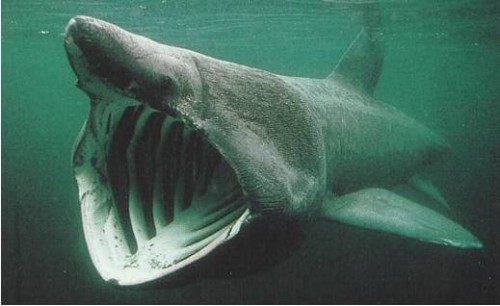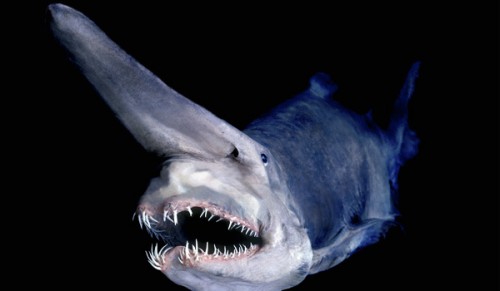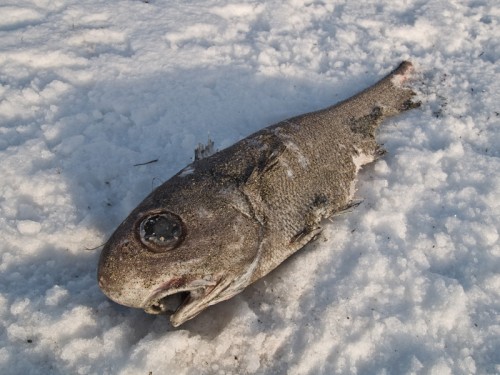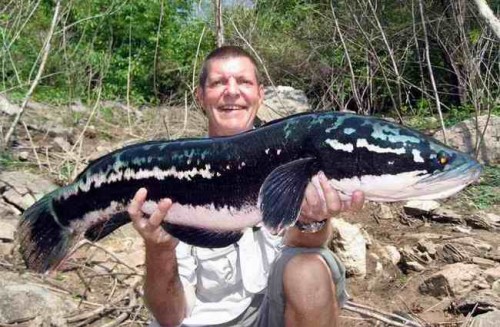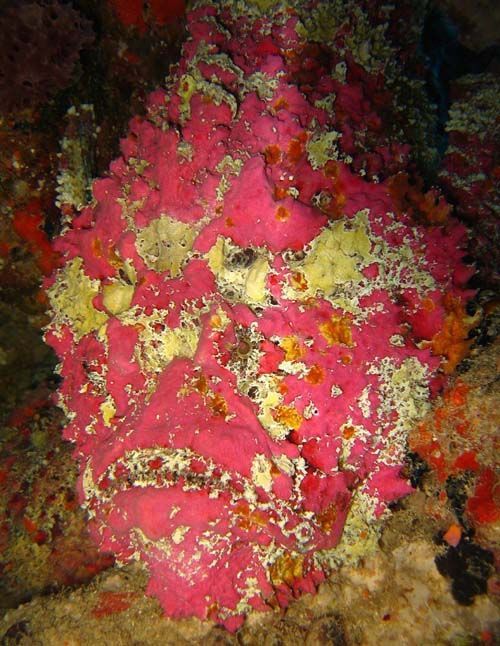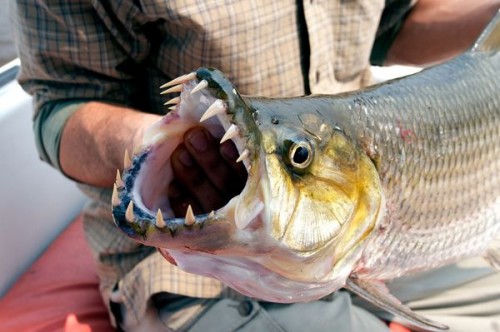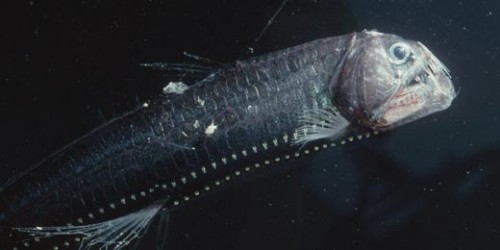Animals, and especially fish, aren’t all cute and lovely. Even Nemo isn’t that hot in real life, and if you go a bit deeper around the oceans of the world or maybe even to the lake near your house, you might find things that’ll haunt you forever, and wouldn’t mind grabbing a bite or nibble from you as well.
Anglerfish
Just like another member of the ‘creepy’ family, Anglerfish use that rod (a fleshy growth, actually) and some light to lure unsuspecting travelers around the oceans of the world. There are many different species of Anglerfishes – some living on the bottoms and some being open water lovers. They’re all pretty ugly.
Basking Shark
A threatened species of sharks, the Basking shark is the second largest living fish after the Whale Shark and is regarded rather harmless, spending its energy on filter feeding rather than awesomely chewing on surfers, but that huge mouth that opens up to incredible size is simply too creepy not to freak out about.
Blobfish
When you don’t have a single muscle on your body, you’re bound to look a bit creepy. It lives deep in the waters of the coast of Australia and Tasmania, and is rarely seen by humans. It is pretty much a gelatinous mass that is slightly less dense than water, allowing it to survive in great depths (2,000–3,900 ft) and allows the fish to float above the sea floor without expending energy on swimming.
Goblin Shark
Another deep sea animal that lives well beneath where us normal people swim, usually deeper than 200 meters, beyond the reach of sunshine. They are rarely encountered, but they usually feed on squid and crab that live way down under, but still not considered to be a threatened species because no top-predator can actually get to them. Even if they can, they get spooked by those jaws.
Rattail
A nasty looking fish that usually smells worse than any other water dweller due to the high concentration of TMAO in their bodies. Some species use gas bladders with unique muscles to produce sounds, mostly for courtship and mate location.
Snakehead
The problem with these nasty looking creatures is that there’s no one that can eat them, making them one of the most aggressive invasive species on the planet, with no natural enemies outside of their native environment, and the ability to last up to four days on land, wriggling their way on wet land to other bodies of water. It has been nicknamed Fishzilla by National Geographic.
Stonefish
Nasty little camouflaged buggers, who are considered to be among the most venomous fishes in the world, and probably the hardest to actually identify while walking bare-feet in shallow waters. You’ll find them n the coastal regions of Indo-Pacific oceans but also in Florida and the Caribbeans. The stings are a bit more common in Australia, where Stonefish anti-venom is the second-most administered in the nation.
Tigerfish
Tigerfish are one of those terrible species that simply eat anything that comes by way of their mouths and horrifying teeth, living in rivers and lakes around the world, and the African family member is considered to be the African Piranha, with the fish even resorting to cannibalism when no food is around to fill its stomach.
Viperfish
A saltwater fish that dwells in the deeper parts of the oceans and seas during the daytime, going up to the shallows at night. It’s considered one of the fiercest predators of the deepest parts of the seas, believed to attack its prey by luring the victim close to itself with a light producing organ, a photophore located on the end of its dorsal spine. It flashes this natural light on and off while at the same time moving the dorsal spine around like a fishing rod and hanging completely still in the water, and also uses the voluntary natural light producing organ to communicate to its potential mates and rivals


